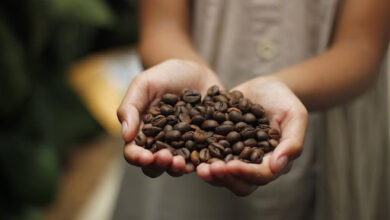What Makes Orange Wine Different from Red, White, and Rosé?

Table of Contents
- Introduction
- A Brief History of Orange Wine
- How Orange Wine Is Made
- Colour and Character: What Sets It Apart
- Tasting Notes: What to Expect from a Glass
- Food Pairings That Work Beautifully
- Misconceptions About Orange Wine
- Why It’s Having a Moment
- A Fresh Take on an Ancient Classic
Introduction
Orange wine might sound like a quirky new trend, but it’s actually one of the oldest styles of wine on the planet. Often misunderstood due to its name, this distinctive beverage has nothing to do with oranges in terms of ingredients or flavour. Instead, orange wine is a product of ancient winemaking techniques brought back to life by a new wave of winemakers and wine lovers.
While red, white, and rosé wines are familiar staples, orange wine offers something refreshingly different. At Forest Wines, customers have increasingly turned their attention to this traditional yet intriguing category, curious to experience a wine that’s as rich in character as it is in colour.
A Brief History of Orange Wine
Despite its modern-day resurgence, orange wine has its roots in winemaking practices that date back thousands of years, particularly in regions like Georgia in Eastern Europe. Back then, winemakers fermented white grapes with their skins and seeds intact, often in clay vessels buried underground.
This method preserved the natural integrity of the grapes while creating wines with structure, depth, and a tannic grip typically associated with reds. For centuries, these ancient traditions persisted in smaller winemaking communities, only recently gaining wider attention in global markets.
How Orange Wine Is Made
The defining characteristic of orange wine lies in how it’s produced. Whereas white wine is made by pressing white grapes and immediately discarding the skins, orange wine takes the opposite route. White grapes are crushed, and instead of removing the skins, they’re left in contact with the juice during fermentation — sometimes for days, weeks, or even months.
This extended skin contact is what gives the wine its amber to burnt-orange hue, as well as the bold, textural complexity that sets it apart. The result is a wine that behaves more like a red in terms of mouthfeel, with the fruit profile of a white, and the earthiness of something aged or rustic.
Colour and Character: What Sets It Apart
Orange wine boasts a distinctive appearance — typically ranging from deep gold to a vibrant, cloudy orange. The exact shade depends on the grape variety, duration of skin contact, and the winemaker’s approach.
Beyond colour, it also stands out for its texture. Many orange wines have a slightly grippy, tannic edge, which is unusual for white grapes. This textural weight, combined with flavours that can range from dried apricots and marmalade to nuts, tea leaves, and even a bit of funk, makes each sip a sensory experience.
Tasting Notes: What to Expect from a Glass
Orange wine can be an adventure for the palate. It’s often described as bold, intense, and layered. Common tasting notes include:
- Dried fruits like apricot, orange peel, or fig
- Savoury elements such as bruised apple, herbs, or olive brine
- Oxidative notes, depending on the winemaking process, reminiscent of sherry or cider
- A tannic structure more aligned with red wine than white
Don’t be surprised if it challenges your expectations. Many people find their first glass slightly jarring — but for those who enjoy complexity and natural character, it’s deeply rewarding.
Food Pairings That Work Beautifully
Due to its tannins, acidity, and robustness, orange wine pairs wonderfully with a wide variety of foods — often more so than traditional whites or rosés. Here are some standout matches:
- Fermented or pickled dishes – Think kimchi, sauerkraut, or miso
- Rich vegetarian fare – Pumpkin risotto, roasted root vegetables, or lentil stew
- Charcuterie and aged cheeses – Particularly those with a strong umami profile
- Middle Eastern and North African cuisines – With spices like cumin, coriander, and turmeric
Its flexibility at the table is one of the many reasons chefs and sommeliers are increasingly singing its praises.
Misconceptions About Orange Wine
One of the most common misunderstandings is that orange wine contains oranges or citrus flavourings — it doesn’t. The term “orange” refers purely to its colour.
Another misconception is that orange wine is always funky or cloudy. While some natural or minimal-intervention examples may lean that way, many orange wines are clean, crisp, and polished, depending on the winemaker’s preference.
Finally, some assume it’s a passing trend. In reality, orange wine is as traditional as it gets — it’s only new to most of us.
Why It’s Having a Moment
Orange wine has gained popularity for several reasons: the rise of natural wines, an appetite for something different, and a renewed interest in traditional winemaking methods. It also offers a sense of authenticity, often being made in small batches by independent producers using organic or biodynamic methods.
It appeals to curious drinkers — those who want to move beyond the mainstream and enjoy a bottle with a story. In wine bars, specialist shops, and online retailers, the presence of orange wine is steadily growing, and with good reason. It’s not just different for the sake of it — it’s compelling in its own right.
A Fresh Take on an Ancient Classic
Orange wine is more than just a talking point at the dinner table — it’s a bridge between the past and the present. It challenges conventions and rewards those willing to step outside the familiar.
For those who appreciate nuance, texture, and a story in every glass, orange wine offers something that other wines don’t quite deliver. Whether you’re a seasoned enthusiast or simply curious, it’s well worth seeking out a bottle — and letting it surprise you.
Let it breathe, sip it slowly, and savour the layers. You might just find a new favourite in an old-world tradition brought back to life.




